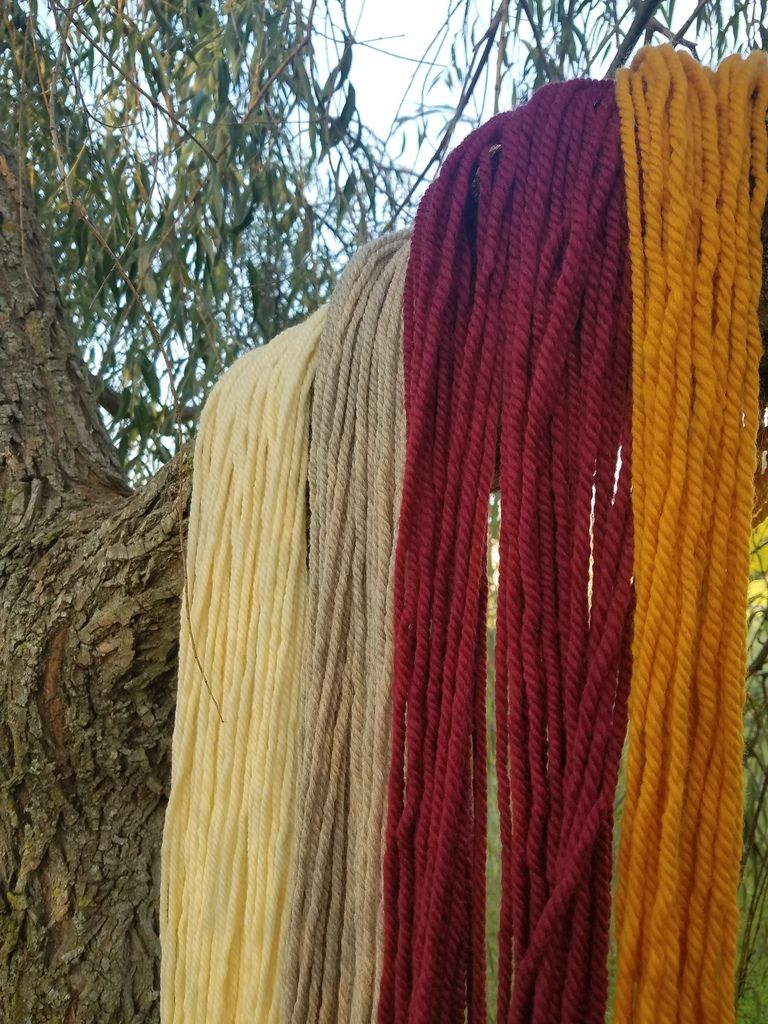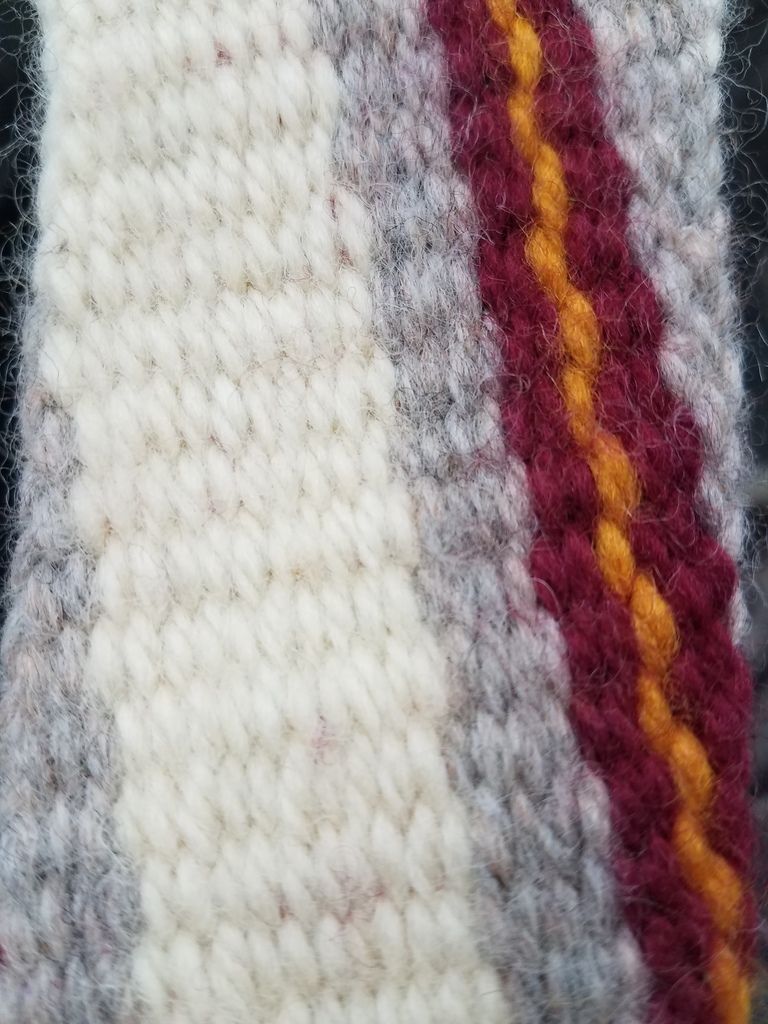Inkle weaving on the loom itself is obviously not HC being it was invented in the 1920's. Therefore it pains me to see modern inkle looms at period events... Why not recreate a ridged heddle type loom?
At any rate, I love finger weaving... I know there has been some talk awhile back on it so I wanted to share my latest ongoing project with the hopes that it may spark more interest in people to give it a try.
While finger weaving indeed is a tedious affair it is one that is rather relaxing and enjoyable, not to mentioned immensely rewarding. The weaving itself is very repetitious as the same process is repeated thousands of times. This sometimes is were people decide not to bother with it. However this is a skill were one weaves for maybe thirty minutes to an hour and will walk away to return at a later time.
One mistake beginners seem to make is the choice of yarns. Acrylics and blends are the enemy to finger weavers... STAY AWAY FROM THEM. Not only for HC but they also are a thorn in the hand to weave with and can cause hands and fingers to crack and split. 100% wool acts in sorts like a Velcro and holds itself together which aids in a tight weave. It also is easy on the fingers and hands.
Nothing about the weaving process is hard, IMO I feel starting the first few rows is the hardest to master. Once one is successfully weaving it's a matter of keeping proper tensions to ensure a tight weave is achieved.
I have in the image a simple diagonal weave which is a very simple over-under technique. It yields what you see, a simple diagonal pattern. Many variations in color can be had by placing the wool yarns in various configuration's. You also have the chevron weave which is a little more complex that involves weaving from the center out, left and right.
This particular sash is approximately 2.5" in width. I personally prefer a smaller sash in width as the larger variety are just uncomfortable to me. This Sash is 51 strands of 100% wool.
I hope reading over this gives others a spark to try, many resource's are available to beginner's, certainly give them and finger weaving a go!


At any rate, I love finger weaving... I know there has been some talk awhile back on it so I wanted to share my latest ongoing project with the hopes that it may spark more interest in people to give it a try.
While finger weaving indeed is a tedious affair it is one that is rather relaxing and enjoyable, not to mentioned immensely rewarding. The weaving itself is very repetitious as the same process is repeated thousands of times. This sometimes is were people decide not to bother with it. However this is a skill were one weaves for maybe thirty minutes to an hour and will walk away to return at a later time.
One mistake beginners seem to make is the choice of yarns. Acrylics and blends are the enemy to finger weavers... STAY AWAY FROM THEM. Not only for HC but they also are a thorn in the hand to weave with and can cause hands and fingers to crack and split. 100% wool acts in sorts like a Velcro and holds itself together which aids in a tight weave. It also is easy on the fingers and hands.
Nothing about the weaving process is hard, IMO I feel starting the first few rows is the hardest to master. Once one is successfully weaving it's a matter of keeping proper tensions to ensure a tight weave is achieved.
I have in the image a simple diagonal weave which is a very simple over-under technique. It yields what you see, a simple diagonal pattern. Many variations in color can be had by placing the wool yarns in various configuration's. You also have the chevron weave which is a little more complex that involves weaving from the center out, left and right.
This particular sash is approximately 2.5" in width. I personally prefer a smaller sash in width as the larger variety are just uncomfortable to me. This Sash is 51 strands of 100% wool.
I hope reading over this gives others a spark to try, many resource's are available to beginner's, certainly give them and finger weaving a go!








